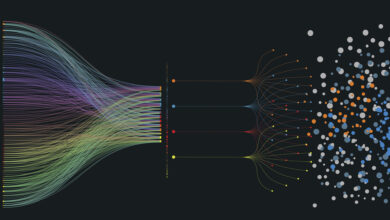All AI Security & AI Safety Posts
-
AI Security
The Threat of Query Attacks on Machine Learning Models
Query attacks are a type of cybersecurity attack specifically targeting machine learning models. In essence, attackers issue a series of queries, usually input data fed into the model, to gain insights from the model's output. This could range from understanding the architecture and parameters of the model to uncovering the actual data on which it was trained. The nature of these attacks is often stealthy…
Read More » -
AI Security
Securing Data Labeling Through Differential Privacy
Differential Privacy is a privacy paradigm that aims to reconcile the conflicting needs of data utility and individual privacy. Rooted in the mathematical theories of privacy and cryptography, Differential Privacy offers quantifiable privacy guarantees and has garnered substantial attention for its capability to provide statistical insights from data without compromising the privacy of individual entries. This robust mathematical framework incorporates Laplace noise or Gaussian noise…
Read More » -
AI Security
Explainable AI Frameworks
Trust comes through understanding. As AI models grow in complexity, they often resemble a "black box," where their decision-making processes become increasingly opaque. This lack of transparency can be a roadblock, especially when we need to trust and understand these decisions. Explainable AI (XAI) is the approach that aims to make AI's decisions more transparent, interpretable, and understandable. As the demand for transparency in AI…
Read More » -
AI Security
Meta-Attacks: Utilizing Machine Learning to Compromise Machine Learning Systems
Meta-attacks represent a sophisticated form of cybersecurity threat, utilizing machine learning algorithms to target and compromise other machine learning systems. Unlike traditional cyberattacks, which may employ brute-force methods or exploit software vulnerabilities, meta-attacks are more nuanced, leveraging the intrinsic weaknesses in machine learning architectures for a more potent impact. For instance, a meta-attack might use its own machine-learning model to generate exceptionally effective adversarial examples…
Read More » -
AI Security
How Saliency Attacks Quietly Trick Your AI Models
"Saliency" refers to the extent to which specific features or dimensions in the input data contribute to the final decision made by the model. Mathematically, this is often quantified by analyzing the gradients of the model's loss function with respect to the input features; these gradients represent how much a small change in each feature would affect the model's output. Some sophisticated techniques like Layer-wise…
Read More » -
AI Security
Batch Exploration Attacks on Streamed Data Models
Batch exploration attacks are a class of cyber attacks where adversaries systematically query or probe streamed machine learning models to expose vulnerabilities, glean sensitive information, or decipher the underlying structure and parameters of the models. The motivation behind such attacks often stems from a desire to exploit vulnerabilities in streamed data models for unauthorized access, information extraction, or model manipulation, given the wealth of real-time…
Read More » -
AI Security
How Model Inversion Attacks Compromise AI Systems
A model inversion attack aims to reverse-engineer a target machine learning model to infer sensitive information about its training data. Specifically, these attacks are designed to exploit the model's internal representations and decision boundaries to reverse-engineer and subsequently reveal sensitive attributes of the training data. Take, for example, a machine learning model that leverages a Recurrent Neural Network (RNN) architecture to conduct sentiment analysis on…
Read More » -
AI Security
When AI Trusts False Data: Exploring Data Spoofing’s Impact on Security
Data spoofing is the intentional manipulation, fabrication, or misrepresentation of data with the aim of deceiving systems into making incorrect decisions or assessments. While it is often associated with IP address spoofing in network security, the concept extends into various domains and types of data, including, but not limited to, geolocation data, sensor readings, and even labels in machine learning datasets. In the realm of…
Read More »







